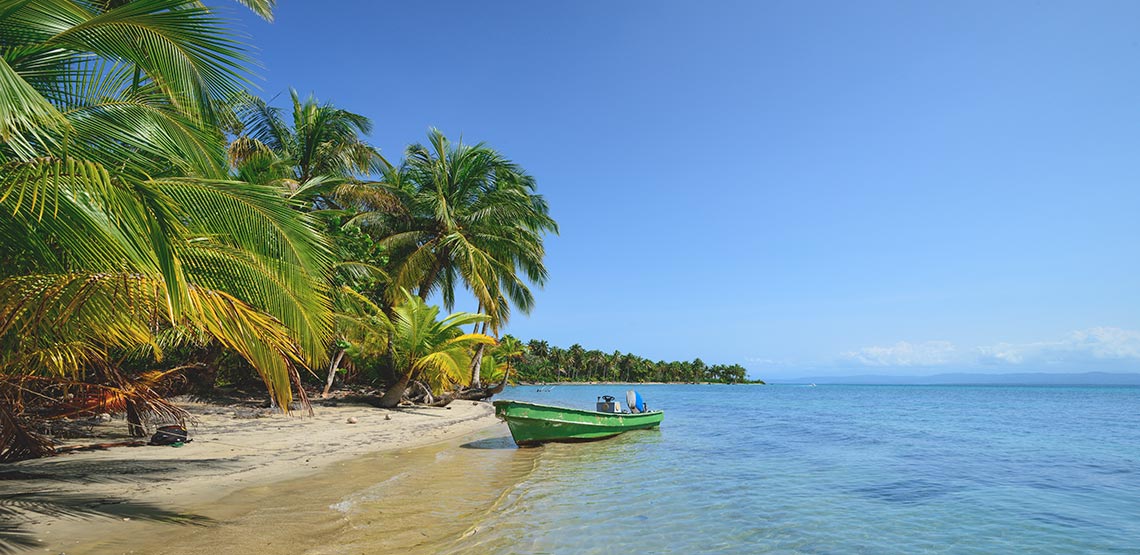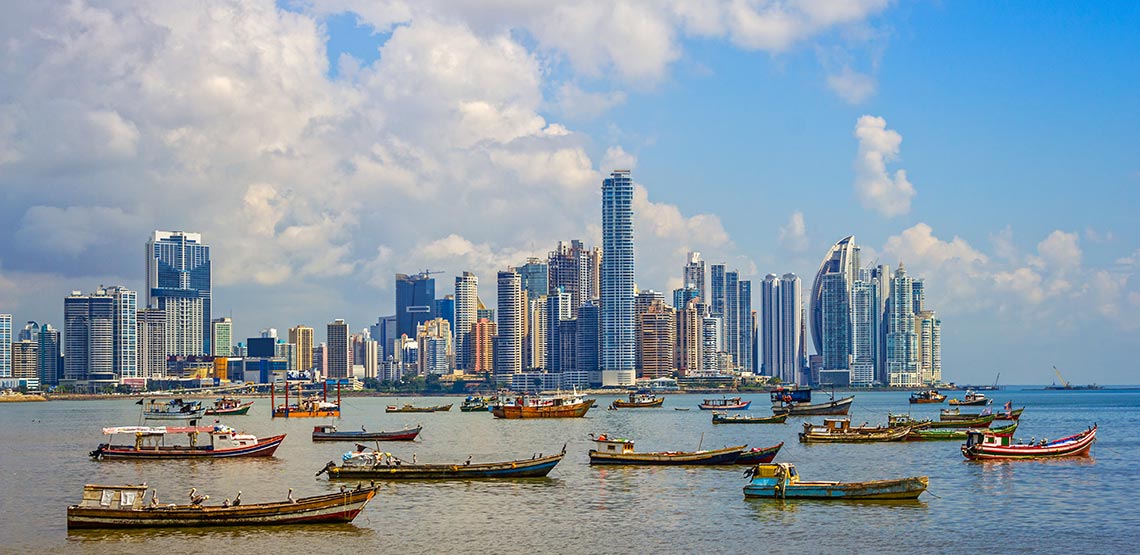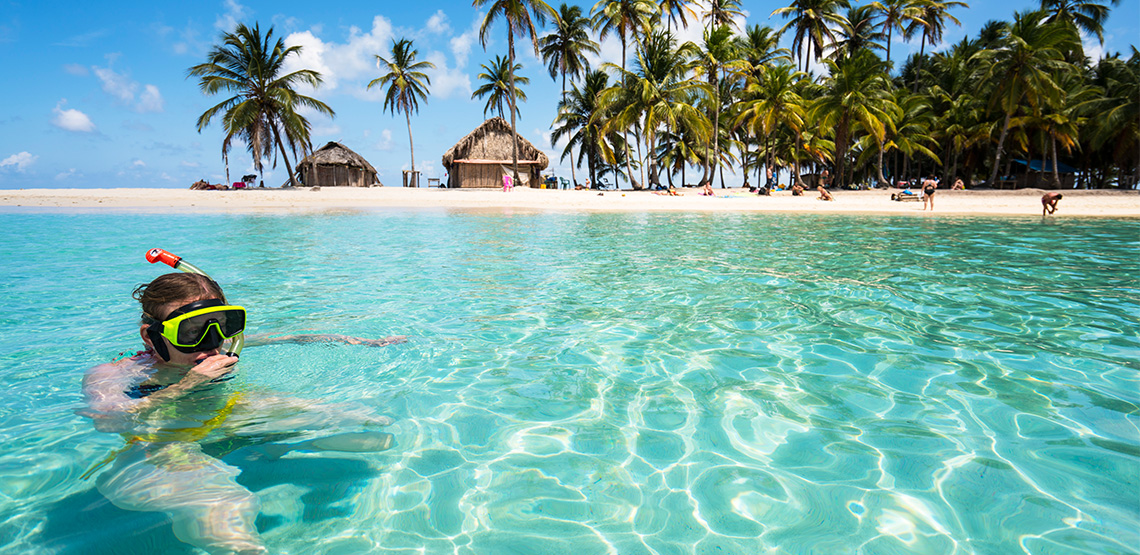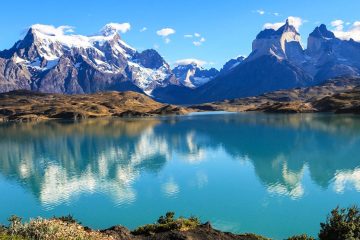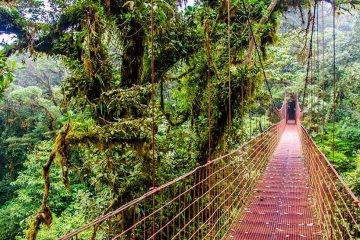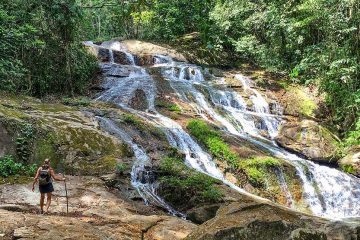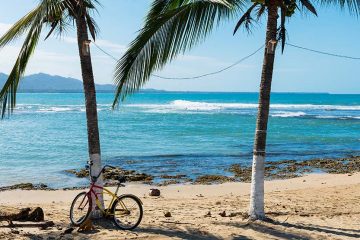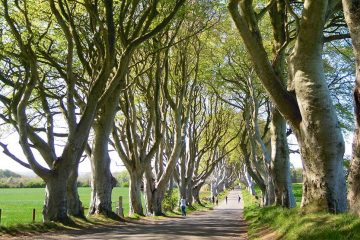Plan the Perfect Beach Holiday with This Travel Guide to Panama
Pack Your Sunscreen and Hiking Boots — Beaches and Jungles Await!
Sandwiched between the crashing surf of the Pacific Ocean and the laid-back chill of the Caribbean, Panama is the ultimate beach destination with a generous helping of jungle adventure thrown in. Here’s what you need to know about Panama tourism when planning your holiday.
Top Things to See When Visiting Panama
The compact size of the country means you can stroll city boulevards, spot exotic birds in the jungle, then sink your toes into the sand of a paradisaical beach all in the same day if you wish. Panama’s delights are best savored a little slower, however, so give yourself at least 10 days to enjoy a few of these highlights.
Panama City
The vibrant metropolis of Panama City will most likely be your first port of call and it’s worth spending a few days here to tick off all the sights. The towering buildings of the city are laid out in a gracious arc around a glittering bay, making this a visually stunning spot to visit, and it doesn’t stint on the culture or history either.
The Casco Viejo peninsula is a lovely colonial neighborhood that contrasts in spectacular fashion against the ultra-modern skyline of the business district. Right on the fringe of the city are lush rainforests and sandy beaches. Then of course, there is the mighty Panama Canal — one of the greatest examples of innovative engineering in the world.
Bocas del Toro
The colorful Caribbean enclave of Bocas has strings of clapboard houses and sandy streets that thrum to reggae-infused beats. The Bocas del Toro archipelago features many stunning islands with oodles of beaches and perpetual laid-back vibes. The area has a slightly gritty, backpacker feel to it, but travelers from all walks of life will fall for the undeniable natural beauty of Bocas.
Guna Yala Islands
Also known as San Blas, the archipelago off the Caribbean Coast of Panama is the closest thing you’ll ever get to paradise. Each island is a perfect combination of gelato-soft sand, elegant palm trees and endless blue water that looks like it was taken straight out of someone’s desktop background.
The jewel-like islands belong to the indigenous Guna people and tourists are only permitted to visit in controlled numbers, which makes the experience even more special.
Santa Catalina
The itty bitty surf town is a major magnet for anyone who wants to ride some waves or just relax in a quiet corner of the world for a while. Surf lessons can be expensive — around $100 a day — but you can get good deals that include food and accommodation, making this an adventurous all-inclusive trip
Boquete
Surrounded by coffee plantations and close by the Baru Volcano, Boquete is a lush inland retreat from sand and surf. The cool climate and fertile surroundings make the area ripe for hiking, climbing, rafting and then relaxing in hot springs at the end of an active day.
What to Know Before You Go
With strong links to the United States, you’ll probably find Panama City strangely familiar and easy to adjust to. Outside of the capital city however, Panama is distinctly Latin American with plenty of quirks and unique cultural traits. Here are a few handy tidbits of Panama travel advice to make sure your trip goes smoothly.
- Although a Panamanian Balboa is the official currency of Panama, it’s fairly rare. The most widely used currency is the U.S. dollar. If you do come across some Balboa coins it’s a very simple exchange rate — one Balboa is equal to one U.S. dollar.
- English is widely spoken, especially in Panama City. However, a few Spanish phrases can still come in handy if you plan on eating at local hangouts, so brush up on your gracias and por favors.
- Panama’s rainforests are home to several indigenous tribes. A cultural tour to these communities is a wonderful way to catch a glimpse of lifestyles and traditions that have been preserved for hundreds of years. You can also support the local tribes by purchasing handicrafts such as Embera baskets or Ngobe beadwork.
- Dancing and music are both loved passionately by Panamanians. With more than 700 festivals taking place in the country each year, and countless parties in all the streets and bars, you’re almost guaranteed to get pulled into a crowd of twirling people at some point. Try your hand (or feet) at merengue, bachata or even el tamborito, the national dance of Panama.
The planet is a big, beautiful place but you can't go everywhere. Add these 15 places to your travel bucket list and start trip planning!
Costs and Budget
Panama may be one of the more expensive countries in Central America but on the whole it is still an affordable destination. A dorm bed in a hostel typically costs around $12 USD, while a private room in a simple hotel can cost as little as $40 USD.
At local food joints you’ll be able to get a plate of decent grub for less than $5 USD, but in Westernized restaurants you can expect to pay more than twice that. Traveling by land is cost-effective, with bus tickets only costing around $10 USD for shorter trips and $25 USD for overnight. On the other hand, flights within the country can be pricey.
Low-budget travelers can survive on $50 USD a day, with $100 USD usually enough to keep mid-range travelers in creature comforts.
Safety
You should always take care of your belongings while in Panama City and larger towns, especially at night. Leave your passport and large amounts of cash in the safe at your hotel to be on the safe side.
The Darian gap in the south of Panama attracts a certain breed of intrepid traveler, but the border with Colombia is still fairly dangerous and should be avoided, as drug traffickers are active in the area.
When to Visit
Panama’s tropical climate means warm weather all year round, but it also entails both wet and dry seasons. Visit Panama between December and April to avoid the worst of the rainy weather. On the Caribbean Coast, short intense bouts of rainfall are common at any time of year, but the sunshine typically comes out within a few hours so it’s nothing to worry about.
On the Pacific side of the country, May to November are the wettest months.

